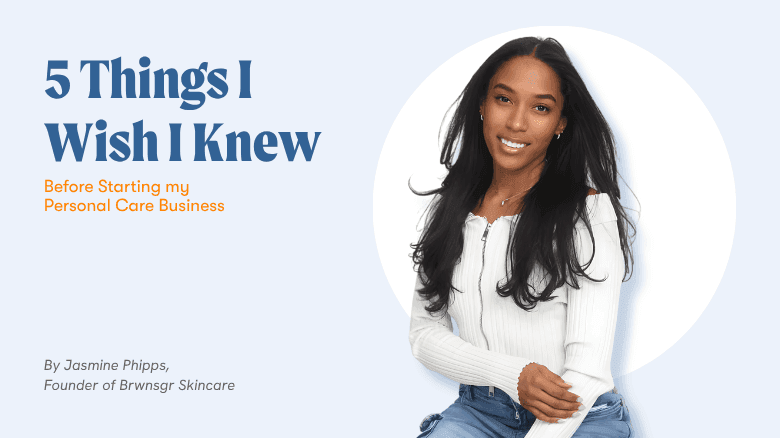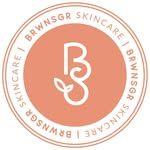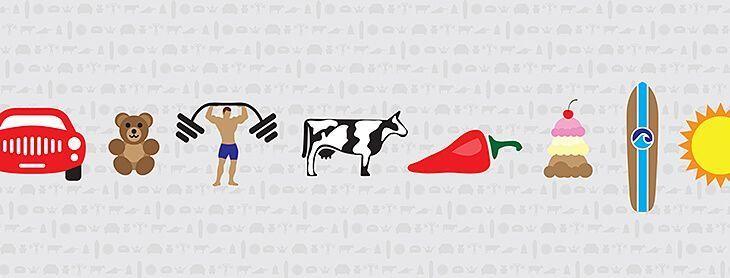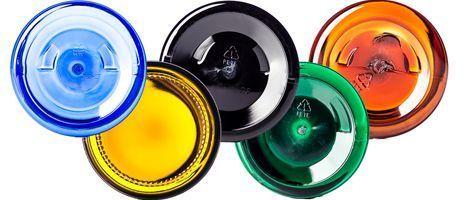Top 5 Things I Wish I Knew Before Starting My Personal Care Business


When I started Brwnsgr Skincare, I had $600, a homemade contract from my mom, and zero idea what I was doing. I just knew I loved making things—and that my brother’s eczema needed saving.
I didn’t set out to build a brand. I just wanted to make something that would help my little brother’s eczema. But once that first jar of lavender and tea tree body butter actually worked, it flipped a switch in my brain. Suddenly, I was hooked on mixing, testing, and learning.
Fast forward a few years and I’ve learned plenty. Some lessons were sweet; others were sticky. Here are the five things I wish I knew before starting my personal care business.

1. Start small and stay consistent
Meaningful growth starts with intentional steps.
When I first launched, I thought I had to sell everything: scrubs, oils, butters, balms, you name it. What I really needed was focus. My first year, I made products only when someone ordered them. I’d list ten jars online, and when one sold, I’d mix it fresh in my kitchen. I didn’t have shelves of inventory or a warehouse full of ingredients — just a couple of core recipes and a lot of late nights.
That’s how I learned to stay consistent. Every post, every update, every jar mattered. When you’re small, people forget you fast. If I go a week without posting, engagement drops. When I show up regularly, sales come back.
Consistency doesn’t mean posting five times a day — it means showing up like your business deserves it, even when it’s just you and a tripod in bad lighting.
2. Test your products (and then test them again)
I wish someone had warned me how humbling testing can be.
There was this one sugar scrub that looked beautiful — thick, golden, perfect texture. I was so proud. Two weeks later, the oils floated to the top, and it looked like a science experiment gone wrong. That’s when I realized testing isn’t just about making sure something smells good; it’s about how it behaves over time.
Now, I let every new product sit for a few weeks before I even think about selling it. I try it on different skin types — dry, oily, sensitive — and pay attention to how it holds up in heat or cold.
If you’re formulating, learn to work in percentages, not spoonfuls. Some ingredients are safe at 2%, some only at 0.5%. A quick Google search for “usage rate + [ingredient]” can save your skin. Pun fully intended.
Testing might feel slow, but it’s how you build trust. You can recover from a slow launch; you can’t recover from burning someone’s skin because you rushed.
3. Create an experience, not just a product
People buy with their eyes first — and they come back because of how you made them feel.
When I started, I thought a good formula was enough. But the truth is, the experience is what keeps people coming back. The way your jar feels in their hand. The label design. The note you leave in the box.
That doesn’t mean you need a huge budget. My first “branding department” was Canva, vinyl sticker paper, and a paper cutter. I printed every label on my little inkjet printer and laminated them by hand. It wasn’t fancy, but it looked intentional — and that mattered.
I also learned the importance of being consistent across everything. My brand colors (white and pink), my website, my Instagram — they all spoke the same language. That visual rhythm built trust before anyone even tried my products.
And the most underrated thing? Talking to your customers. I still recognize names when repeat orders come in. I answer messages myself. I remember who found me through a subscription box three years ago. Those connections are everything.
4. Invest in quality packaging early
This one’s personal — and not just because you're reading this on Container and Packaging's website.

When I ordered my first containers, I had no idea what I was doing. I just knew I couldn’t afford to buy 5,000 jars from somewhere else. Container and Packaging is great for small businesses because they let me order in small quantities and sample first. It was perfect for someone testing formulas and learning by trial and error.
Good packaging made my business feel real before it actually was. It also protected my products, made them look professional at markets, and gave me confidence to keep going.
Now, years later, I still love that their stuff is affordable, reliable, and doesn’t make you buy more than you need.
Container and Packaging was literally the first supplier I ever used — and the reason I could start small without feeling small. I’ll still hand-cut labels on my kitchen table, but the containers? Those, I trust to do their job.
5. Build your online presence like you already have 30,000 followers
When I started posting, I had no idea what I was doing. I’d record myself making products, talking to a camera alone in my room while my mom listened downstairs, probably wondering what was going on. It was awkward — but it worked.
Some of my most popular videos were filmed on bad lighting days when I was covered in shea butter and running on fumes. People don’t want perfection; they want real.
If you’re just starting, don’t overthink it. Use what you have:
- A phone camera.
- Natural light.
- Your process.
Film everything — even if you never post it.
One day you’ll look back and see how far you’ve come, and your followers will too. And don’t sleep on short-form videos. Reels, TikToks, and YouTube Shorts can reach more people than any ad I’ve ever paid for (and I’ve barely paid for any — I’m big on organic growth). Start an email list early too. I love Omnisend, but Mailchimp or ConvertKit work great and are free for small lists.
Collaboration helps too. I once partnered with a subscription box that featured my products, and I still have customers who found me through it years later. Sometimes exposure beats expense.
Bonus: Tools and systems that saved my sanity
Eventually, I realized I didn’t have to do everything myself. These tools made my life a lot easier and helped me feel like an actual CEO instead of an assembly line:
- Canva — for branding, social posts, labels, and everything visual.
- Calendly — to streamline bookings, coaching calls, or collaborations.
- Zapier — connects all your apps so you’re not manually copying info between them.
- Omnisend, Mailchimp, or ConvertKit — for simple, automated email marketing.
- Fiverr — when you need design or admin help but can’t yet hire staff.
- EFS (E-Fulfillment Service) — a 3PL that stores, kits, and ships small batches with no minimums. It made launching my DIY body butter kits possible and gave me my time (and sanity) back.
If I’d known about these tools earlier, I might’ve slept more in 2020 and stressed less.
Final thoughts
If I could go back to the day I borrowed that $600, I’d tell myself three things:
- Start smaller. You don’t need every product idea you’ve ever had to be successful.
- Stay visible. Consistency beats perfection every time.
- Invest in packaging that makes you proud. Because how you present your product matters just as much as what’s inside.
Building a personal care business is about showing up when no one’s watching, creating intentionally, and believing that even your small steps are leading somewhere big.
I’m still learning every day — but if this helps one person start with a little more confidence than I did, then it’s worth sharing.




